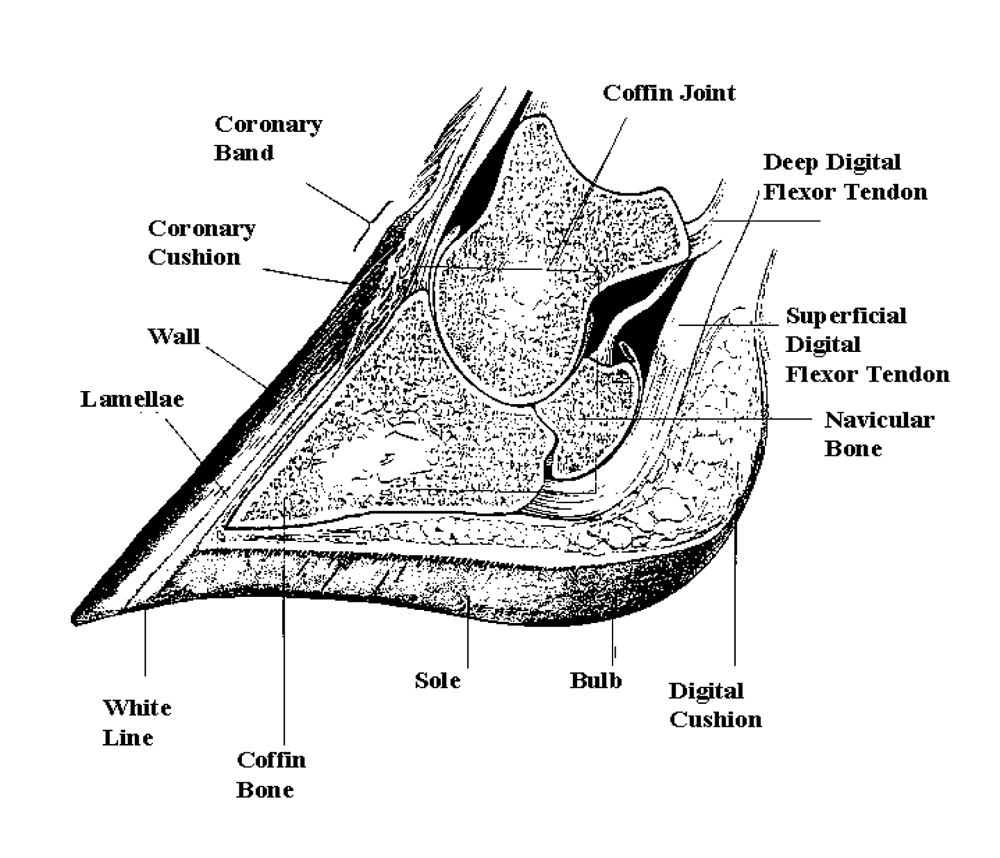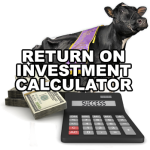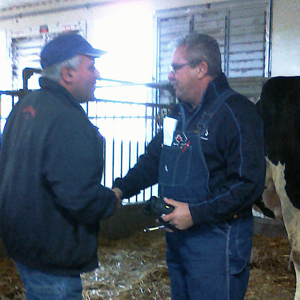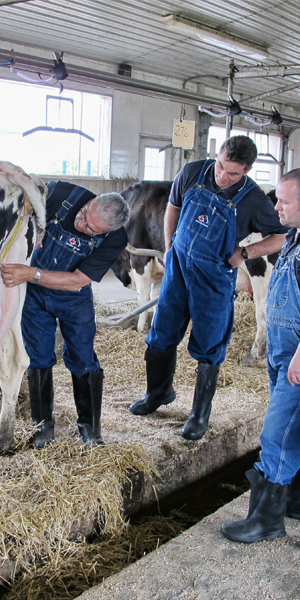During this past week many of my Facebook friends have been debating on whether a third generation Excellent cow with good milk production should she be used as an ET recipient or should she be bred to produce her own calf (Discussion Part 1 – Part 2). The debate started when one friend shared the picture of his Excellent cow with her latest calf – an IVF heifer from young highly rated genomically evaluated parents. Opinions weighed in from all points of view, each participant stating emphatically why their position was the one that was most correct. The majority said that, if it were their cow, they would breed her to produce her own calf. Well as I see it – that should depend on your herd’s genetic plan and how you define profitable.
Tradition Is Shifting
For quite some time, Excellent cows were few and far between. In Canada 0.2% were Excellent and in the USA it was about 1.0% Excellent. Because of scarcity, daughters from Excellent cows would bring a very good price in leading sales. Sons, if by the right sire, were often of interest to A.I. for entry into young sire proving programs. Therefore if you owned an Excellent cow you owned a revenue generator.
Forty years ago the focus in breeding was the long lived Excellent cow with good lifetime milk production. Then the focus shifted to first or second lactation high scoring (minimum VG85), high producing and high indexing cows from respected cow families. With genomic evaluations coming on the breeding scene, high genomically evaluated heifers, three to twelve months of age, are now the sought after group. This change in focus to a 65+% reliable high indexing heifers has created a divide in breeder thinking and breeding goals. (Read more: Is Type Classification Still Important? And Is Good Plus Good Enough?)
Take Your Pick
Today some breeders long for a return to the days when Excellent or 1st prize at a major show was all you needed to know about a cow. Other breeders are uncertain as to what they should be breeding for. Others simply state that they want cows that are less prone to being culled than in the past. Others have incorporated production and type genomic evaluations into their breeding programs. And still others are thinking in terms of using total selection indexes that put significant emphasis on health, immunity, fertility, labor efficiency and feed efficiency. (Read more: The Truth About Type and Longevity and RF Goldwyn Hailey: Cash Cow or Cash Hog?)
Reality Check
The fact is that we now live in a new era for dairy cattle breeding.
Let’s look at some 2014 realities for Holstein breeders that did not exist in 2000:
- Producers are in need of ways to reduce feed costs. Feed is the #1 on-farm cost at 50-60%. Making better use of the rumen to process forages is in vogue. (Read more: 50 Sires that will Produce Feed Efficient Cows)
- Producers are looking for ways to automate. The cost of labor, the number two on-farm cost, has increased greatly. Breeder want cows that work well with machines and which require minimal extra hands on care.(Read more: Does Your Breeding Program Save You Labor?)
- Many herds are not rearing as many or any heifers at all. The cost of rearig herd replacements is the third highest on-farm expense (Read more: Should you be raising your own heifers?). In 2014 it costs more to raise an average replacement heifer ($2200) than she will bring at a sale after she calves ($1800).
- For the majority of producers, reproduction and lameness are now two of the most prevalent herd problems (Read more: Cow Mobility: One Step Forward or Two Steps Back? And FACT VS. FANTASY: A Realistic Approach to Sire Selection). Udders and production, once limiting factors in Holsteins, have been improved significantly.
- The sex of a calf can be planned. Sexed semen can now be 95% accurate and soon will be almost as fertile as regular semen. Studies show that two heifer calves to start a cow’s productive life means 1000 lbs more milk (Read more: Sexed Semen from Cool Technology to Smart Business Decision and SEXED SEMEN – At Your Service!).
- In 2014 $5,000 is a top animal price except for high gTPI, Net Merit or gLPI heifers or for exceptional show animals. (Read more: An Insider’s Guide to What Sells at the Big Dairy Cattle Auctions 2013 and Is There Still Going To Be A Market For Purebred Dairy Cattle In 10 Years?)
- Producers are well aware that large cows cost more to grow and maintain and do not function as well in group environments as medium sized cows do (Read more: Does Size Matter?).
- Foreign buyers are not flocking to North America to buy heifers. Animal transport costs are high and health testing is costly and restrictive. Only embryos from the top animals routinely bring the top dollars ($1000 to $4,000).
There is no going back to former times!
Looking Forward
Type and also milk production will receive less attention in the breeding of dairy cows in the future because breeders have already made significant progress for those traits. Specific proteins, fats and solids in milk will be what consumers want in the milk products that they include in their diets. Producers will breed for a herd of cows that return the most profit (Read more: She Ain’t Pretty – She Just Milks That Way). And yes, cows will be polled (Read more: From the Sidelines to the Headlines, Polled is Going Mainline!, Polled Dairy Genetics: The Cold Hard Facts and The 24 Polled Bulls Every Breeder Should Be Using To Accelerate the Genetic Gain in Their Herd). Excellent cows will not be a singular focus. Perhaps I should qualify that statement. The Excellent cows of the past will not be sought after. It could well be that breeders will redefine what is required for a cow to be classified as Excellent.
Dr. Paul VanRaden, USDA-AIPL, has laid out the challenge for breeders in the future. He identified that today the best animal has a Net Merit of $1009 but knowing what we currently know about the genome, the best animal could have a Net Merit of $7515. (Read more: The Genetic “SUPER COW” – Myth vs Reality)
The Bullvine Bottom Line
Technological advancements make breeding more profitable Holsteins a reality for future breeders. Conformational correctness will be only a fraction of what we need to know about a cow relative to profitability. For the breeder of the cow in the Facebook discussion, profitability included milk in the tank while producing a calf of high genetic worth. Excellent did not matter. We cannot ignore the realities relative to consumer demands, business management and genetic improvement. If we ignore them, we do so at our own peril.

Get original “Bullvine” content sent straight to your email inbox for free.







 UDDERLY EXCELLENT
UDDERLY EXCELLENT FACING FORWARD WITH CLASSIFICATION
FACING FORWARD WITH CLASSIFICATION



